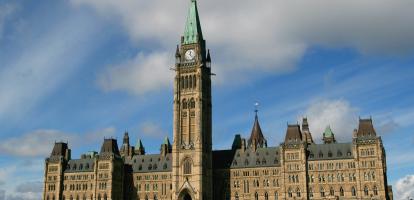Governments in the advanced economies mounted a massive fiscal response to the COVID crisis. They ramped up spending, mainly on income supports to individuals and businesses, and financed it by borrowing. Central banks also responded on a massive scale. They dropped their policy interest rates close to zero, and their balance sheets ballooned as they bought securities — mainly government debt — and flooded the global financial system with liquidity.
These responses undoubtedly cushioned the COVID blow to our economies. But, more than a year later, especially in the United States and Canada, both fiscal and monetary policy are still in overdrive. It is reasonable to worry that they are going too far.
On the fiscal side, the income losses from the pandemic turned out to be far smaller than the U.S. and Canadian governments’ emergency spending. That is why household and business saving hit record levels last spring and pent-up demand is now so strong as restrictions ease.
On the monetary side, the Fed and the Bank of Canada supplied so much liquidity that, after an initial sag, prices rebounded, and are now rising faster than before the pandemic. The U.S. CPI rose 5.0 per cent over the year to last May, and the Canadian CPI rose 3.6 per cent over the same period — well above the Bank of Canada’s target of two per cent.
Granted, some concern about too much spending and borrowing, and too much debt-buying and money-creation, reflects hindsight. Last spring, many commentators thought the pandemic and its economic effects would be far worse.
Still, with the virus retreating and activity resuming, political leaders on both sides of the border keep spending and issuing debt, while central bankers continue to hold their interest rates at emergency levels and buy debt. Look at fiscal and monetary policy together, moreover, and there’s a hint of something more than independent over-reactions to a crisis. It’s as though stimulus tag-teams are at work.
Since the start of 2020, the U.S. federal government has run up about US$4 trillion in debt and the Fed’s balance sheet has grown by about US$3.8 trillion. Over the same time, our federal government has run up about $480 billion in debt and the Bank of Canada’s balance sheet has grown by about $360 billion.
These comparisons are rough. I am pro-rating over fiscal years; the U.S. and Canadian governments measure debt differently; and there is more to the Fed’s and Bank of Canada’s balance sheets than their respective federal governments’ debt. Still, it is disconcerting that these explosions of debt issue have coincided with central bank purchases of similar magnitudes.
It could be that, by chance — and unlike in past crises — the fiscal and monetary responses independently caused the U.S. and Canadian governments to issue the debt they did, and the Fed and the Bank of Canada to buy the debt they did. But both central banks have said they are still buying bonds to keep long-term interest rates down. Monetary policy normally focuses on the short-term policy rate. Taking responsibility for longer-term rates moves central banks closer to committing to contain the cost of government borrowing. That undermines their independence and moves us a step toward printing money to cover spending that governments can’t or won’t finance with taxes.
These excesses have run further in the United States. Elected leaders there no longer even talk about getting government debt on a sustainable path. The Fed says it is OK with inflation higher than two per cent, and its announcement Wednesday showed no inclination to raise its policy rate before 2023. The Bank of Canada is more resolute about its two per cent target. But easy money from the Fed increases the pressure for easy money from the Bank. And although the Bank is buying bonds more slowly than it was earlier in the crisis, its current $3 billion-a-week pace would, over a year, almost exactly equal the deficit the federal government projected in its spring budget — that disconcerting coincidence again.
Canadians need more reassurance that a fiscal-monetary tag-team will not inflate away the value of their money. It would help if the federal government showed more credible restraint than it did in the spring budget. It would also help if the Bank of Canada reiterated even more forcefully that nothing — be it events in the United States or the evolution of federal fiscal policy — comes ahead of its commitment to two per cent inflation.
The COVID crisis is ending. We do not want an economic one to replace it.
William Robson is CEO of the C. D. Howe Institute.




